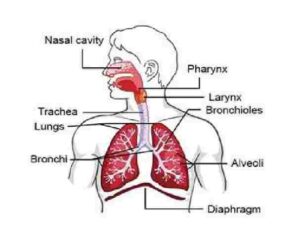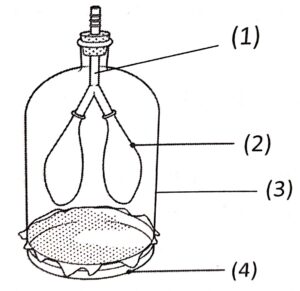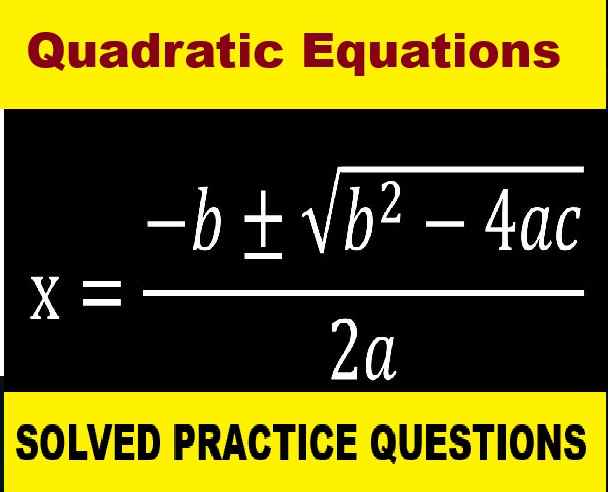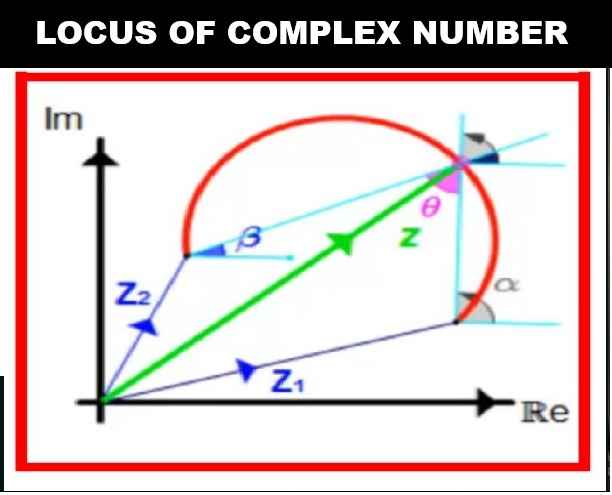Respiratory System Goyal Brother Solutions ICSE Class-9 Biology Ch-16. We Provide Solutions of Exercise-16 Respiratory System Goyal Brother Prakashan ICSE Class-9 Ch-16. All Type exercise question such as name the following, difference between, MCQs, Answer the question. Visit official Website CISCE for detail information about ICSE Board Class-9.
Class-9 ICSE Biology Ch-16 Respiratory System Goyal Brother Solutions
| Board | ICSE |
| Publications | Goyal Brother Prakashan |
| Subject | Biology |
| Class | 9th |
| Writer | Dr. S.K. Aggarwal |
| Chapter-16 | Respiratory System |
| Topics | Solutions of Exercises-16 |
| Edition | for 2022-2023 Academic Session |
Ch-16 Respiratory System
Goyal Brother Prakashan ICSE Class-9 Biology Solutions
(Page-157-158)
Question 1. Give the technical terms for the following:
(i) The structure where exchange of gases takes place in lungs.— alveoli
(ii) The respiratory tubes formed by the division of wind pipe before they enter the lungs.—bronchi
(iii) The air left in the lungs after expiration.—ERV
(iv) The volume of air normally inspired or expired in one breath.—-Tidal volume
(v) A disease which occurs in smokers.—chronic bronchitis
Question 2. Mention if the following statements are True or False. If false, rewrite them by changing the words printed in bold face:
(i) Left lung is bigger than right lung. False
(ii) Pharynx is the common passage for food and air. True
(iii) Expiration is an active process. False
(iv) Tidal volume is equal to vital capacity of the lungs. False
(v) ERV is the maximum capacity of lungs for inhaling air. False
(vi) Tidal volume: Vital capacity+ IRV+ ERV. False
Question 3. Match the items in Column A with those in Column B:
| Column A | Column B |
| (a) Respiration | (i) Physical process |
| (b) Pharynx | (ii) Double membrane enclosing lungs |
| (c) Breathing | (iii) Diffusion of respiratory gases |
| (d) Alveolus | (iv) Biochemical process |
| (e) Pleura | (v) Common passage for food and air. |
Answer
| Column A | Column B |
| (a) Respiration | (iv) Biochemical process |
| (b) Pharynx | (v) Common passage for food and air. |
| (c) Breathing | (i) Physical process |
| (d) Alveolus | (iii) Diffusion of respiratory gases |
| (e) Pleura | (ii) Double membrane enclosing lungs |
Question 4. Complete the following statements by choosing the correct alternative out of those given within brackets:
(i) Oxygen loosely joins with ……RBCs..….. (RBCs / WBCs / plasma)
(ii) The trachea is guarded by a cartilaginous flap which closes windpipe at the time of swallowing food. It is called ….epiglottis.…. (epiglottis / glottis / larynx)
(iii) Adam’s Apple is .. larynx... (pharynx / larynx/ glottis)
(iv) The trachea has cartilaginous rings to prevent their collapsing. These rings are ….incomplete…. (complete /half/ incomplete)
(v) The exchange of air takes place between capillaries and ..alveoli... (alveoli/bronchi/trachea)
Question 5. Given below are sets of five terms each. Rewrite the terms in correct order in a logical sequence beginning with the term that is underlined.
(i) Nasal cavity, Pharynx, Nose, Lungs, Trachea.
(ii) Bronchus, Alveoli, Trachea, Larynx, Bronchioles
(iii) Larynx, Lungs, Diaphragm, Nasal cavity, Pharynx.
Answer :
(i) Nose Nasal cavity, Trachea. Pharynx,, Lungs,
(ii) Larynx, Trachea, Bronchus, Bronchioles Alveoli
(iii) Nasal cavity, Pharynx. Larynx, Diaphragm, Lungs,
Question 6. Define the following:
(i) Direct respiration– It is the exchange of environmental oxygen with the carbon dioxide of the body cells without special respiratory organs and without the aid of blood. Example Insects
(ii) Indirect respiration– It is the respiration in which oxygen is transported to each cell of body via blood
(iii) Tidal volume– Tidal volume is the amount of air that moves in or out of the lungs with each respiratory cycle. It measures around 500 mL in an average healthy adult male and approximately 400 mL in a healthy female. It is a vital clinical parameter that allows for proper ventilation to take place.
(iv) Vital capacity— the greatest volume of air that can be expelled from the lungs after taking the deepest possible breath.
(v) Asphyxiation–the failure or disturbance of the respiratory process brought about by the lack or insufficiency of oxygen in the brain
Question 7. List the various organs of human respiratory system.
Answer :
- Nose.
- Mouth.
- Throat (pharynx)
- Voice box (larynx)
- Windpipe (trachea)
- Large airways (bronchi)
- Small airways (bronchioles)
- Lungs.
Question 8. What functions are performed by the ciliated mucous epithelium of the nasal chamber?
Answer : This type of epithelial lining also secretes mucus that coats the lining and helps with the mucociliary clearance of minute aerosolized particles that become trapped in the nasal mucosa. The nasal cavity also functions to facilitate drainage for the secretions from the adjacent paranasal sinuses
Question 9. Give the function of epiglottis.
Answer : epiglottis is a leaf-shaped flap in the neck that prevents food and water from entering the windpipe and the lungs. It stays open during breathing, allowing air into the larynx.
Question 10. Describe briefly the function of lungs.
Answer : The main function of the lungs is the process of gas exchange called respiration (or breathing). In respiration, oxygen from incoming air enters the blood, and carbon dioxide, a waste gas from the metabolism, leaves the blood. A reduced lung function means that the ability of lungs to exchange gases is reduced
Question 11. Describe the path of air from nostrils to lungs.
Answer : air travels down your pharynx (back of your throat), passes through your larynx (voice box) and into your trachea (windpipe). Your trachea is divided into two air passages called bronchial tubes. One bronchial tube leads to your left lung, the other to your right lung
Question 12. Explain the role of blood in respiration.
Answer : The blood transports oxygen from the lungs to the cells of the body, where it is needed for metabolism. The carbon dioxide produced during metabolism is carried back to the lungs by the blood, where it is then exhaled (breathed out)
Question 13. What effect does altitude have on breathing?
Answer : the reduced oxygen content of the blood induces breathing instability, with periods of deep and rapid breathing alternating with central apnea. This breathing pattern is called high-altitude periodic breathing (PB). It occurs even in healthy persons at altitudes above 6000 ft.
Question 14. What happens in lungs of people suffering from emphysema?
Answer : In people with emphysema, the air sacs in the lungs (alveoli) are damaged. Over time, the inner walls of the air sacs weaken and rupture — creating larger air spaces instead of many small ones. This reduces the surface area of the lungs and, in turn, the amount of oxygen that reaches your bloodstream
Question 15. Draw neat labelled outline sketch to show the respiratory system of humans.
Answer:-

Question 16. The diagram given below represents an experimental setup for demonstrating certain aspects of the air breathed in/out. The two valves C and D help to regulate the direction of the flow of air.

Answer the following questions:
(i) There are mistakes at two places in the diagram. Redraw the diagram correctly to eliminate these mistakes.
Ans: refer fig 16.6 of page number 156 on you text book
(ii) What is the aim of the experiment?
Ans: CO2 is given out in respiration
(iii) Name the liquid contained in the test tube A and the liquid in test tube B.
Ans: Lime water
(iv) what would be the observations after performing the experiment?
Ans:- Expired air contain more CO2 than inspired
Question 17. Look at the given diagram and answer the following questions.

(i) Label the parts (1) to (4).
Ans:– 1 tube, 2-baloon 3 Bell Jar 4. rubber sheet
(ii) Give the aim of the experiment for which this set-up is used.
Ans- mechanism of breathing
(iii) Name the human respiratory organs symbolized by (1), (2) and (3) in the given set-up.
Ans 1 Trachea, 2-Lungs 3 diaphragm
–: End of Respiratory System Goyal Brother Solutions :–
Return to:- ICSE Biology for Class 9 Goyal Brothers Prakashan solutions
thanks


